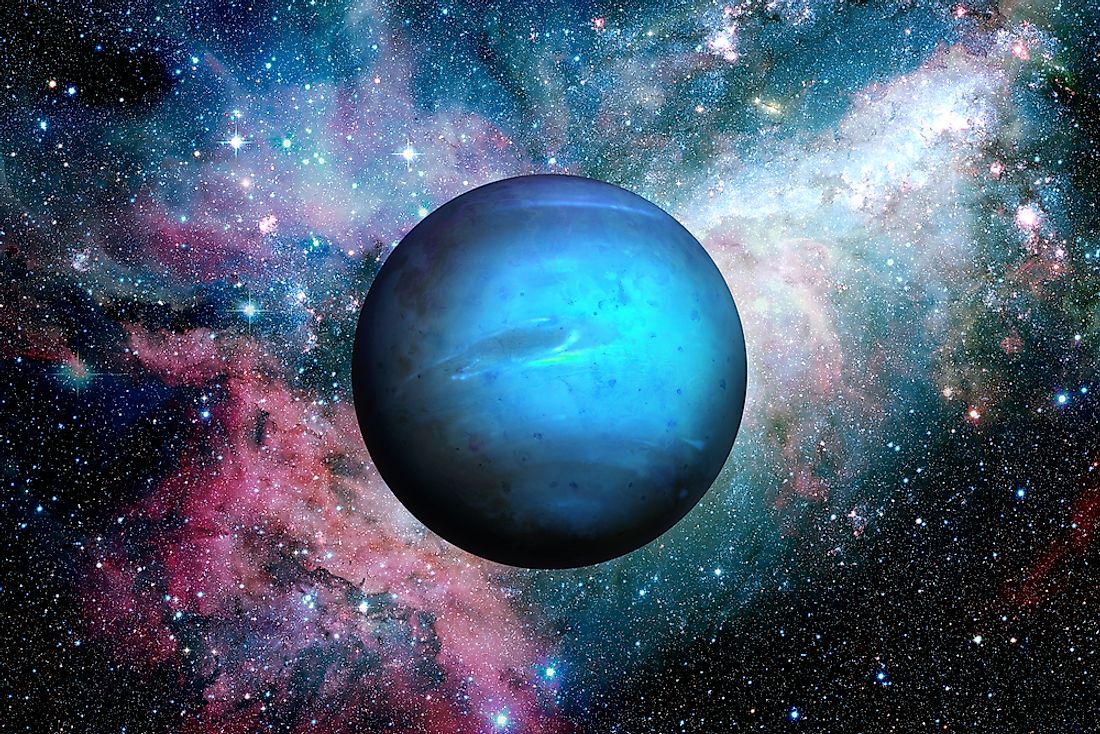What is Neptune Made of?

Neptune is the eighth planet from the Sun and the farthest known planet in the Solar System. It is also the fourth largest planet by diameter, the densest giant planet, and the third largest by mass. Neptune has slightly more mass than its twin planet Uranus and is 17 times the mass of Earth. It takes about 164.8 years for Neptune to complete its orbit around the Sun at an average distance of 30.1 astronomical units. The planet is named Neptune after the Roman god of the sea. One of the earliest recorded observations of Neptune is believed to have been between 1612 and 1613 through the drawings of Galileo which comprised of plotted points that depicted what is currently known as Neptune. However, Galileo was not given credit for the discovery of the planet.
The Internal Composition Of Neptune
The inner structure of Neptune is similar to that of the Uranus. The planet's atmosphere forms approximately 5% to 10% of its mass extending about 10% to 20% towards the core where pressure reaches up to 10 gigapascals which is about 100,000 times more than the pressure found in the Earth's atmosphere. Lower regions of the atmosphere in Neptune are comprised of increased concentrations of ammonia, water, and methane.
The Mantle Of Neptune
Neptune's mantle is rich in ammonia, methane, and water. It is equivalent to between 10 to 15 Earth masses. According to planetary science, such mixture is known as "ice" despite having the characteristics of a hot and dense fluid. Also known as a water-ammonia ocean, the fluid is a high conductor of electricity. The mantle may be comprised of a layer of ionic water which breaks down to oxygen ions and hydrogen soup . Deeper down the mantle there may exist superionic water where the oxygen molecules crystallize and the hydrogen ions float freely around within the oxygen mesh. At 4347 miles deep, the methane may decompose and rain down in the form of diamond crystals such as hailstones. Extreme high-pressure experiments conducted at the Lawrence Livermore National Laboratory propose that Neptune's mantle may consist of an ocean of liquid carbon that comprises of solid diamonds floating on the ocean.
The Core Of Neptune
The interior of Neptune's core has a mass that is approximately 1.2 times that of the Earth's. It is made up of silicates, nickel, and iron. The center of the planet's core is about 700 gigapascals which is about two times as high as the Earth's while its temperature may be about 5,400 Kelvin.
The Atmosphere Of Neptune
The atmosphere of Neptune comprises of 80% hydrogen and 19% helium at high altitudes. It also contains small traces of methane. While methane is responsible for giving the planet its blue hue, astronomers believe that some atmospheric constituent that remains unknown is the cause of Neptune's azure color which is different from that of Uranus. The atmosphere of Neptune is further divided into the stratosphere where the altitude increases with rising temperatures, and the lower troposphere where the lower the altitude, the lower the temperature. The tropopause is what separates these two regions of the atmosphere lying at a pressure of 10 kilopascals. After the stratosphere are two other layers of the atmosphere: the thermosphere at a pressure between 1 and ten kilopascals and the exosphere. There are models that propose that the troposphere of Neptune is banded by clouds which have different compositions at different altitudes.







